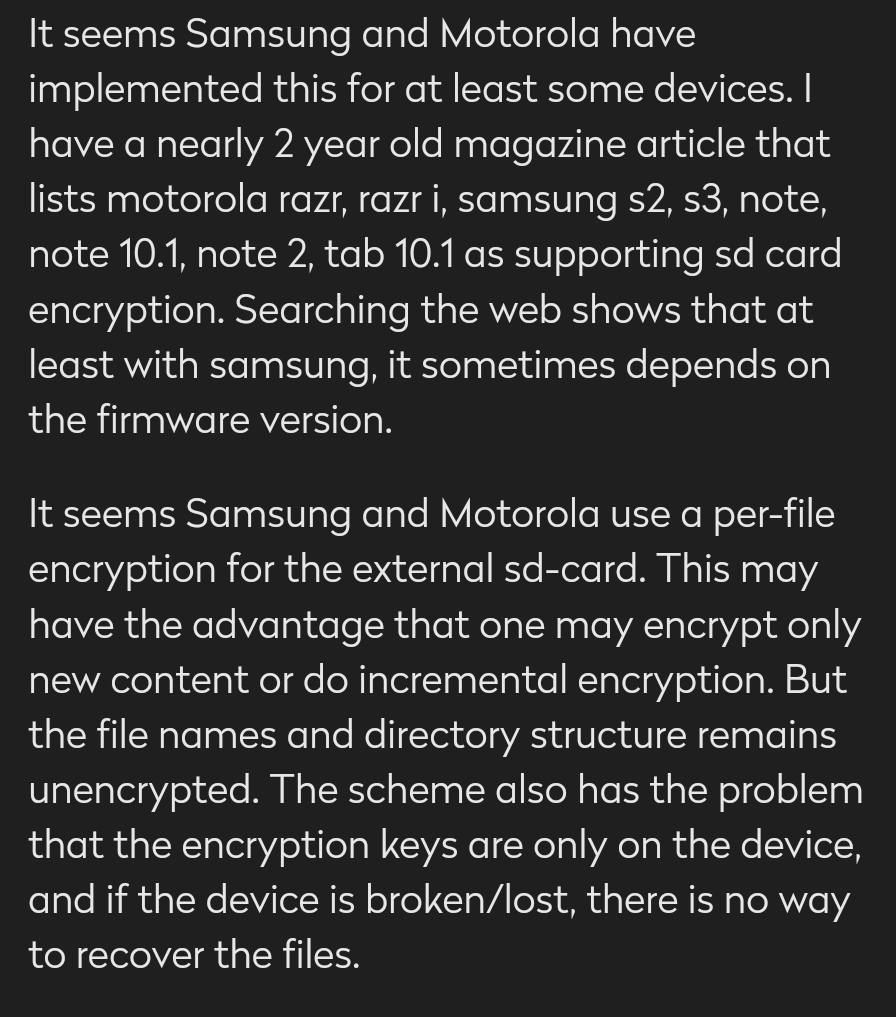you're welcome :)
or since you probably are from Denmark since you mentioned Danish in your other comments:
🇩🇰 bare hyggelig, og håper du fikk løst problemet ditt 🇳🇴
you're welcome :)
or since you probably are from Denmark since you mentioned Danish in your other comments:
🇩🇰 bare hyggelig, og håper du fikk løst problemet ditt 🇳🇴
not to be that guy . but have you tried to search for an answer?
https://github.com/flatpak/flatpak/issues/4435
first hit on "flatpak question marks".. it's due to the font you use in the terminal does not support or not fully support Unicode characters or your locale settings are not correct.
hope this helps and answers your question :)
(edit, lost part of a sentence)
also, remember that the old drive now share the UUID with the NVMe drive (which is why I recommended using partition UUID and not disk UUID), so you will have to create a new GPT signature on the old drive to avoid boot issues if both drives are connected at the same time during boot, otherwise you might run into boot issues or booting from the wrong drive.
sorry for the late reply, the command 'lsblk' can output it:
"sudo lsblk -o +uuid,name"
check "man lsblk" to see all possible combinations if needed.
there is also 'blkid' but I'm unsure whether that package is installed by default on all Linux releases, so that's why I chose 'lsblk'
if 'blkid' is installed, the syntax would be:
"sudo blkid /dev/sda1 -s UUID -o value"
glad you got it fixe, and hope this answers your question
(edit pga big thumbs and autocorrect... )
probably the disk UUID has changed because of the path to the NVMe vs SSD. If you use partition UUID, they will be exactly the same, but the UUID of the physical disk is not cloned, as it is a identifier of the physical device and not it's content.
change it to partition UUID and it will boot.
or you might be unable to decrypt them at all

or, if it was a LG phone, could they be encrypted?
if so, perhaps this will help https://github.com/kamicater/LG-Gallery-Decryptor
if you have access to a windows computer, or perhaps wine can work?, there might be a solution in the bottom of this thread where someone had a similar problem
https://superuser.com/questions/972013/how-to-repair-corrupt-jpeg-files
haven't tested it, so do some antivirus checks on the tool before you decide to test it just to be sure.
good luck, hope you get it sorted
here is a guide you might be able to get some ideas from on how to set it up
you will not be able to get the WOL to work as long as you require a password to boot. if you need full disk encryption, look into storing the encryption password in TPM, enable secure boot and password protect bios/system setup with a locked boot order.
as long as your system requires input from you to start, it will always stop at the luks unlock step, unless you find another place to store the keys to allow unlocking without user input.
it could work if the computer suspended instead of powering off, but then it will fail again in a case of power loss.
hope this helps a bit, and good luck. seems like a fun project.
Might be conflicts due to several routers using the same subnet.. could cause some interesting ARP issues for the switches, and also DHCP conflicts if something is wrongly cabled / configured.
I would try disconnecting everything from after the first switch, connect a computer there to see if it works ok, then reconnect and test behind each step to see where it breaks instead of checking in the end where the problem could be agitated from a issue earlier in the network..
also, if the router has a firewall/nat you will not be able to reach anything behind it, even if there are different subnets being used.. to be able to reach devices behind a router, the network would need to be routed and not nat'ed as nat combines all network traffic into the IP of the router before sending the traffic away, so clients on the other side has no way of knowing who or where the traffic came from after the nat'ed router.
I suggest you read up about this if you are not familiar with difference between NAT and routed traffic.
anyway, this is just my theory, hope you find your problem and get it sorted :)
(edit added part about nat)